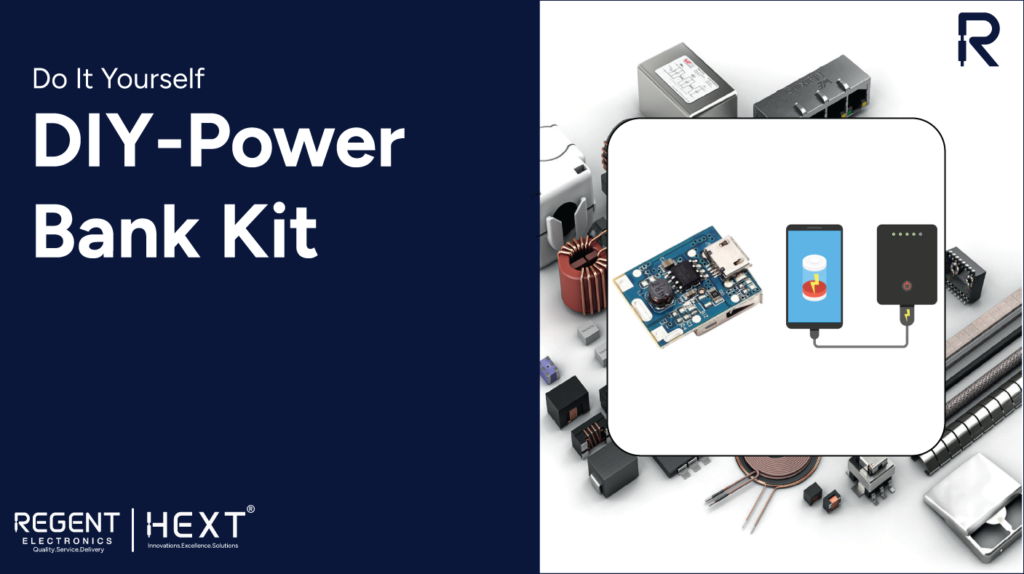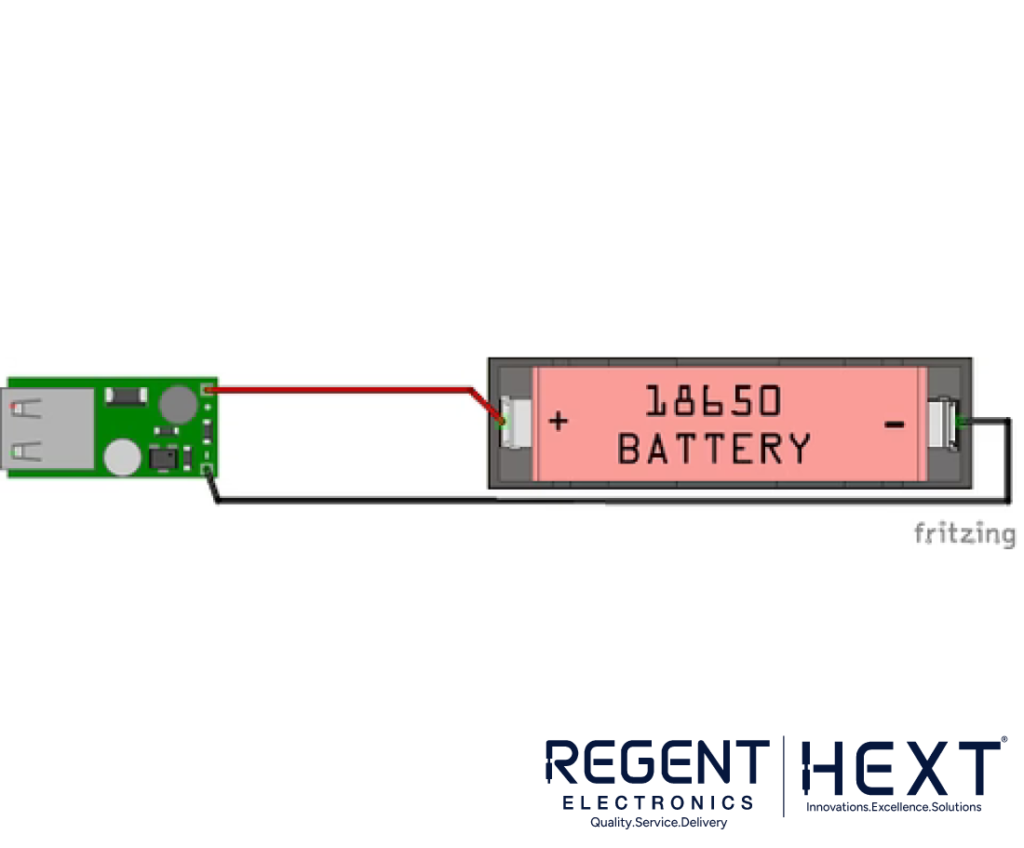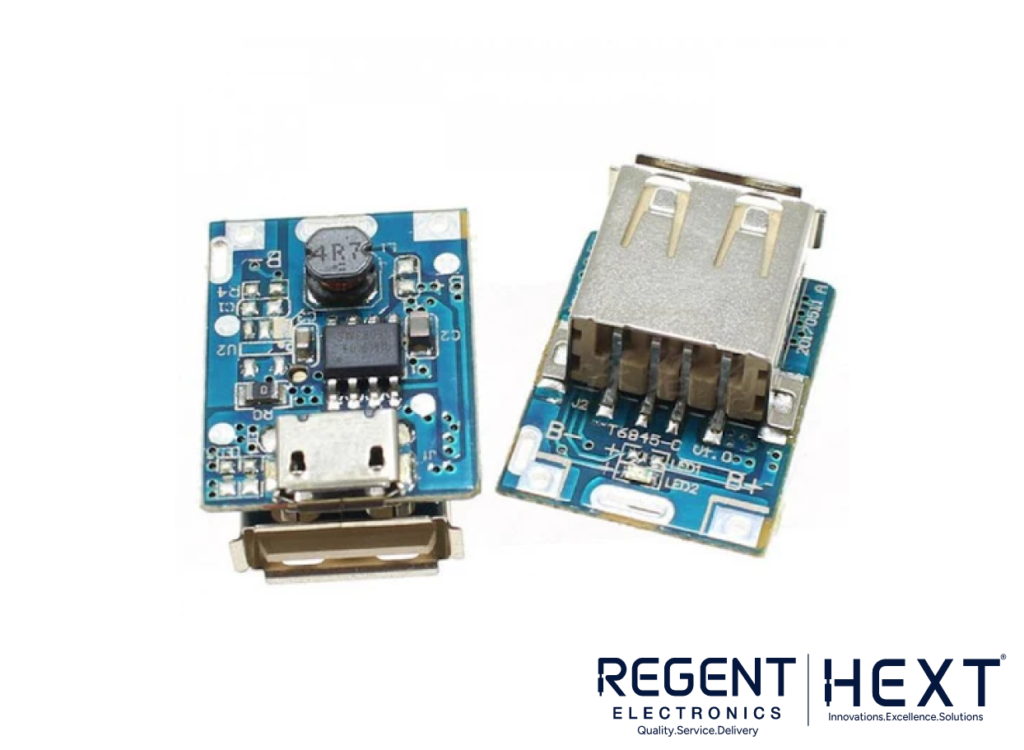
DIY Power Bank Kit – Build Your Own Portable Power Source
Introduction: Build Your Own Power Bank
In today’s digital age, power banks have become essential for charging mobile devices, laptops, and other electronic gadgets on the go. Whether you’re at home, in the office, or on the move, having a reliable power source is crucial. Regent Electronics presents an exciting DIY Power Bank Kit, designed especially for beginners. With this kit, you can build your own portable power bank using simple, easy-to-find electronic components.
Components Required for DIY Power Bank Kit
To build your own power bank, you will need the following components:


- Battery Holder for Li-ion Battery (x1)
- Li-ion Battery (3.7V, 2200mAh) (x1)
- Power Bank Module (x1)


Circuit Diagram for Power Bank
(Here, you would include a simple circuit diagram showing the connections of the battery holder, Li-ion battery, and power bank module.)
Understanding the Components of Your Power Bank
Let’s take a look at the components included in the DIY kit and their functions:
- Battery Holder for Li-ion Battery
The Li-ion battery holder is specifically designed for holding 18650-type batteries. It comes with a 15cm wire length to connect the battery to the power bank module easily.
Buy it here: Li-ion Battery Holder - Li-ion Battery (3.7V, 2200mAh)
This rechargeable battery has a high energy density, making it lightweight and efficient for powering devices. It ensures long-lasting performance and is tested for quality and lifespan.
Specifications:- Maximum Voltage: 4.21V
- Nominal Voltage: 3.7V
- Battery Capacity: 2200mAh
- Maximum Discharge Current: 1A
Buy it here: Li-ion Battery 3.7V 2200mAh
- Power Bank Module
The power bank module is designed to boost the voltage from the Li-ion battery to a stable 5V output for charging devices. It also includes multiple protection features such as overcharging, over-discharging, and short circuit protection.
Specifications:- Input Supply Voltage: 3.7V – 5.5V
- Charging Current: 1A (max)
- Output Current: 1A
- Output Voltage: 5V
- Battery Discharging Stop Voltage: 2.9V
- Charging Status: Red LED Blinks, Fully Charged: Red LED Glows Steady
Buy it here: Power Bank Module
Assembling Your DIY Power Bank Kit
Follow these simple steps to assemble your own portable power bank:
- Connect the Battery to the Power Bank Module
On the power bank module, you will notice two pads labeled +B and -B. Connect the positive terminal of the Li-ion battery to the +B pad and the negative terminal to the -B pad. - Soldering the Connections
Soldering is a crucial part of the assembly process. Follow these tips for effective soldering:- Heat the solder pad slightly with the soldering iron to match its temperature.
- Apply solder on the pad with the soldering wire, but do not overload it.
- Ensure the pad is properly covered with solder to create a strong connection.
- Install the Li-ion Battery in the Holder
Place the Li-ion battery securely in the battery holder. Once the battery is connected, plug in a Type-B mobile charger to start charging the battery. The red LED on the power bank module will blink while the battery is charging, and it will glow steadily when fully charged. - Charge Your Devices
Once the battery is fully charged, use the Type-A USB output port to charge your devices. Simply plug in your mobile device or gadget to begin charging.
Important: Never charge your devices while the power bank is charging itself, as this could damage the module and battery.
Enhancing Your Power Bank Capacity
To increase the capacity of your power bank, you can connect multiple Li-ion batteries in parallel. Here’s how:
- Connect the positive terminals of the batteries together and the negative terminals together.
- This will increase the capacity while maintaining the same voltage.
Note: It is recommended to use no more than two or three batteries to avoid any safety issues.
Why Choose Regent Electronics’ DIY Power Bank Kit?
- Affordable and Easy to Assemble: The DIY kit is designed for beginners, making it an ideal project for those looking to build their own portable power bank.
- Customizable: You can easily increase the power capacity by adding more batteries, ensuring your power bank meets your charging needs.
- Reliable and Safe: With built-in protection features, your devices will be charged safely, and the battery will have a longer lifespan.
Conclusion
Building your own power bank is an exciting and rewarding DIY project that teaches you the basics of electronics and power systems. Regent Electronics offers everything you need to create your own portable power bank – from battery holders to power bank modules. Whether you’re a beginner or a hobbyist, this kit is a great way to enhance your skills and create a practical device for everyday use.
Shop Now and Start Building Your Own Power Bank with Regent Electronics!
